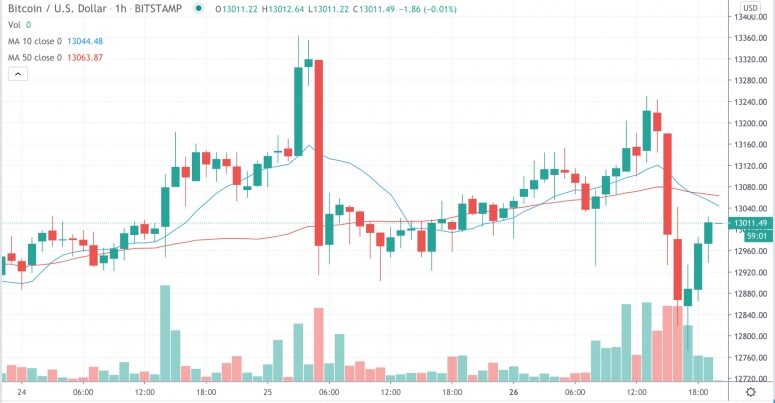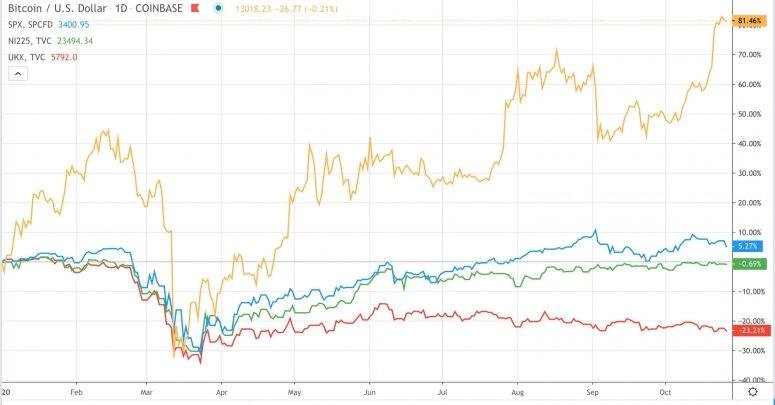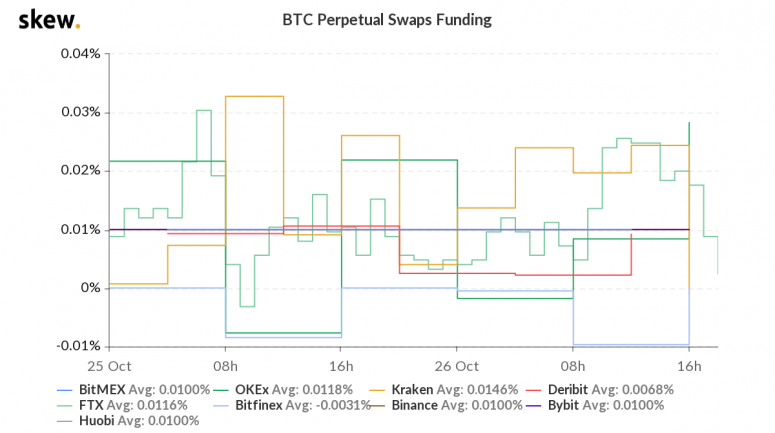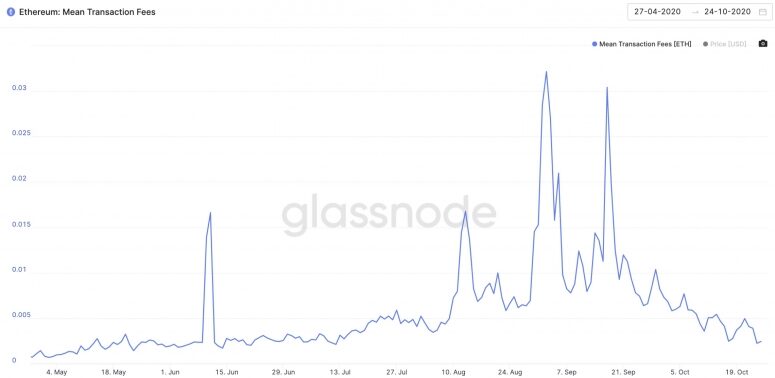Bitcoin’s price fell Monday on larger macroeconomic concerns while lower Ethereum fees benefit hardcore DeFi users.
- Bitcoin (BTC) trading around $13,011 as of 20:00 UTC (4 p.m. ET). Slipping 0.33% over the previous 24 hours.
- Bitcoin’s 24-hour range: $12,773-$13,250
- BTC below its 10-day and 50-day moving averages, a bearish signal for market technicians.
 Bitcoin trading on Bitstamp since Oct. 24. Source: TradingView
Bitcoin trading on Bitstamp since Oct. 24. Source: TradingView
Bitcoin’s price was riding high Monday, going up to $13,250 on spot exchanges like Bitstamp before dropping as low as $12,773 around 17:00 UTC (1 p.m. ET).
John Willock, CEO of crypto liquidity provider Tritum, said the bitcoin market can stay near its current price point, although some traders participated in profit-taking Monday.
“I think that it is possible to keep around $13,000 for the short term,” said Willock. “There will likely be some traders looking to close out longs from the recent run-up that might cause a minor retrenchment,” he added.
However, Consantin Kogan, a partner at crypto fund of funds BitBull Capital, said bitcoin had positive momentum going for it before its abrupt drop in price, and that more is to come. “We must take into account that a correction is already brewing,” he said.“I think it will happen this week.”
Major global stock indices are also down Monday amid COVID-19 uncertainty.
“When macro issues happen, it affects the entire market and not just one asset class,” said Andrew Tu, an executive at quant trading firm Efficient Frontier. “Hopes for stimulus are dimming while coronavirus cases are ticking upwards in America and around the world. This is causing countries to shut down things again, which will cause the economy to contract further.”
While bitcoin has dipped when equities slump of late, the bellwether of cryptocurrency has performed much, much better than stocks over the balance of 2020.
 Bitcoin (gold), S&P 500 (blue), FTSE 100 (green) and Nikkei 225 (red) in 2020. Source: TradingView
Bitcoin (gold), S&P 500 (blue), FTSE 100 (green) and Nikkei 225 (red) in 2020. Source: TradingView
Despite the price drop Monday, the bitcoin derivatives market is still signaling bullishness, according to Cindy Leow, partner at multi-strategy crypto firm 256 Capital. “The market sentiment is starting to grow more exuberant with call options with a $50,000 strike by end of year being listed on Deribit, and futures are starting to heat up,” Leow said.
 Swap funding on major bitcoin futures venues. Source: Skew
Swap funding on major bitcoin futures venues. Source: Skew
Indeed, funding rates on futures are still mostly positive on futures exchanges, which means long-oriented traders continue to pay for leverage liquidity to make bullish bets.
Ether fees keep dropping
Ether (ETH), the second-largest cryptocurrency by market capitalization, was down Monday trading around $391 and slipping 4% in 24 hours as of 20:00 UTC (4:00 p.m. ET).
On Saturday, Oct. 24, the average daily network fees on Ethereum hit 0.00223399 ETH, a low not seen since July 12 and beating the previous October 17 low. Ethereum network fees hit a 2020 high as recently as September, and a record $166 million was paid out to miners during that month.
 Ethereum network fees the past six months. Source: Glassnode
Ethereum network fees the past six months. Source: Glassnode
Yield farmer “devops199fan”, a longtime active participant finding profit opportunities in decentralized finance, or DeFi, said he expects more positive expected volume, or EV, with fees dropping. “I actually think this is good for yield farming,” he told CoinDesk, “because it means more opportunities are positive EV since the fees are lower.”
Other markets
Digital assets on the CoinDesk 20 are mostly red Monday. Notable winners as of 20:00 UTC (4:00 p.m. ET):
- Oil was down 3%. Price per barrel of West Texas Intermediate crude: $38.51.
- Gold was flat, in the green 0.05% and at $1,901 as of press time.
- U.S. Treasury bond yields fell Monday. Yields, which move in the opposite direction as price, were down most on the two-year bond, dipping to 0.147 and in the red 8.9%.
 The CoinDesk 20: The Assets That Matter Most to the Market
The CoinDesk 20: The Assets That Matter Most to the Market
Source
